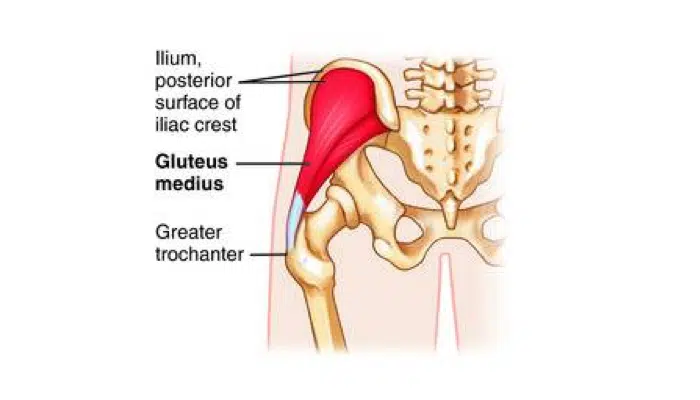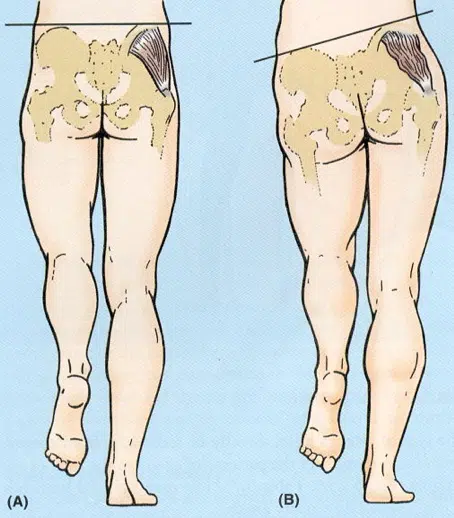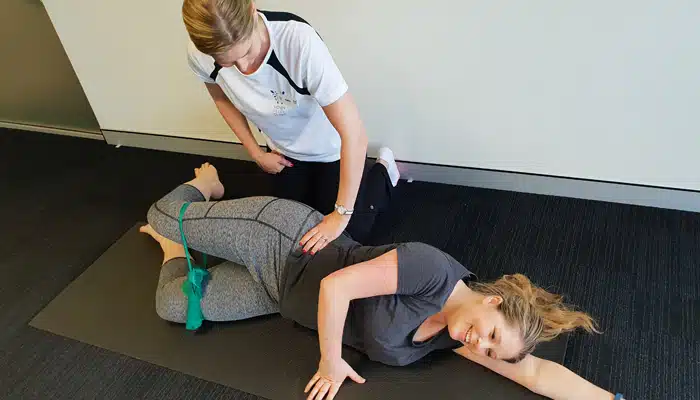Does your body become achy and sore when you walk or run? Have you checked in with your gluteus medius lately?

The gluteus medius is one of the most important, yet often forgotten, muscles in preventing pelvic and lower limb injuries. It is a deep gluteal muscle located on the lateral aspect of the upper buttock. It is a small fan shaped muscle that attaches from the back of the pelvis to the outside of the upper thigh. This muscle acts to stabilise the pelvis when we are balancing on one leg and has an important role in aligning the lower limb. Adequate strength, activation and endurance of the gluteus medius muscle is required to allow optimisation of biomechanics for walking, running and reducing further injuries.

Dysfunction in these muscles caused by both weakness and tightness can result in reduced pelvic stability, where one side of the pelvis drops down (see Figure B above), as well as altered lower limb biomechanics, resulting in a myriad of injuries around the pelvis, hips, knees, ankles and feet. It can also make balancing on one leg a particularly difficult task.
Poor postural habits such as slopping onto one leg whilst standing and crossing our legs, encourage this muscle to switch off and become lazy. One of the easiest ways to keep these muscles awake is to ensure that you stand and sit with your weight evenly distributed, ensuring your knees and feet are hip width apart and the toes face forwards.
Isolated strengthening exercises to help activate and strengthen the muscle are essential. One of my favourite ways to start to strengthen this muscle in isolation is to perform a clam exercise in a side lying position. The key to success with this exercise is the correct set up position and technique, thus it is beneficial to first book a physiotherapy assessment to ensure correct gluteus medius activation. As the muscle and neural connections become stronger, you can begin to incorporate more functional exercises such as a single leg exercises. This progression is imperative to ensure the training carries over to your favourite activity.
Contributor:
This article was brought to you by:
Kathy Jennings – Physiotherapist
Learn more about Kathy Jennings.

